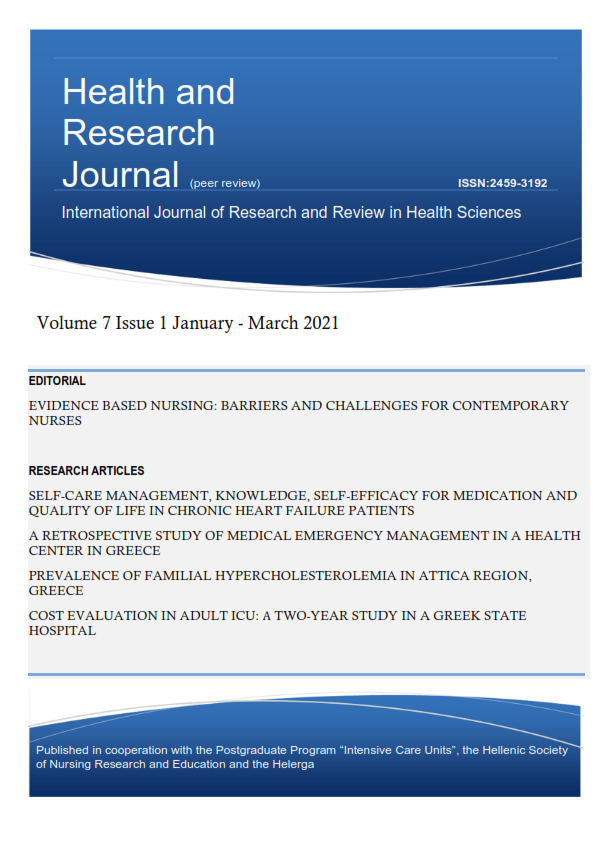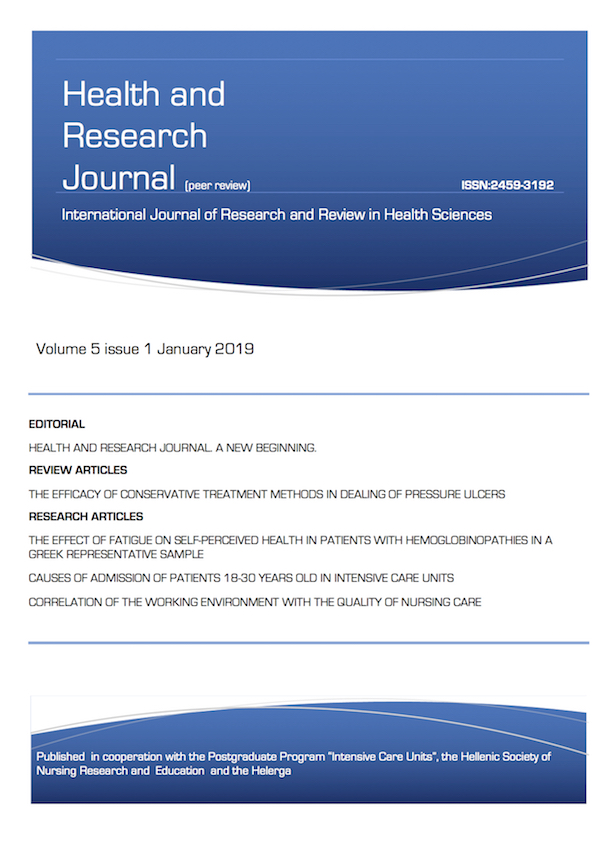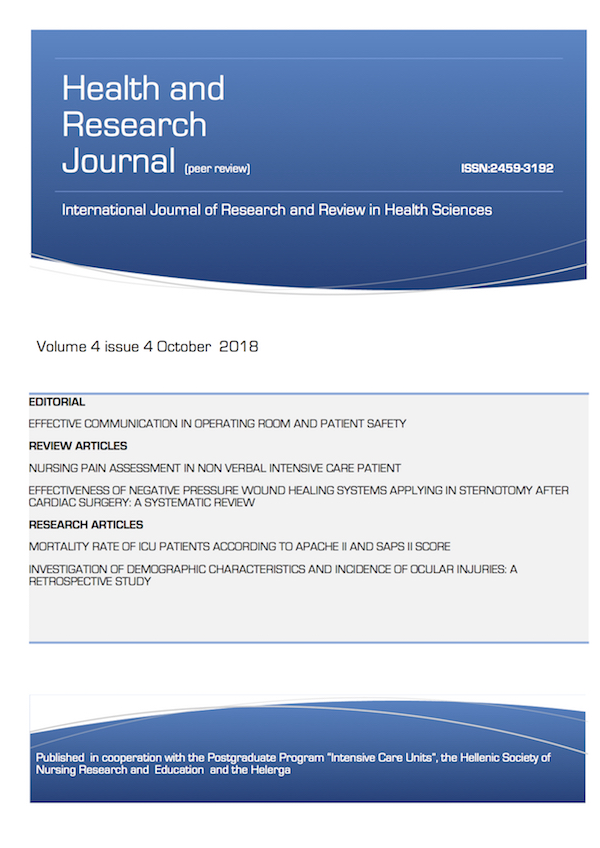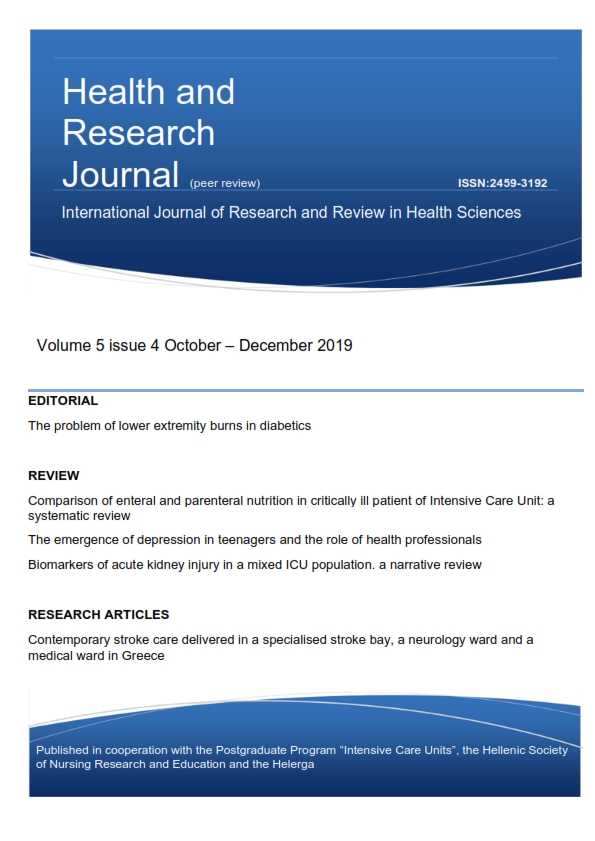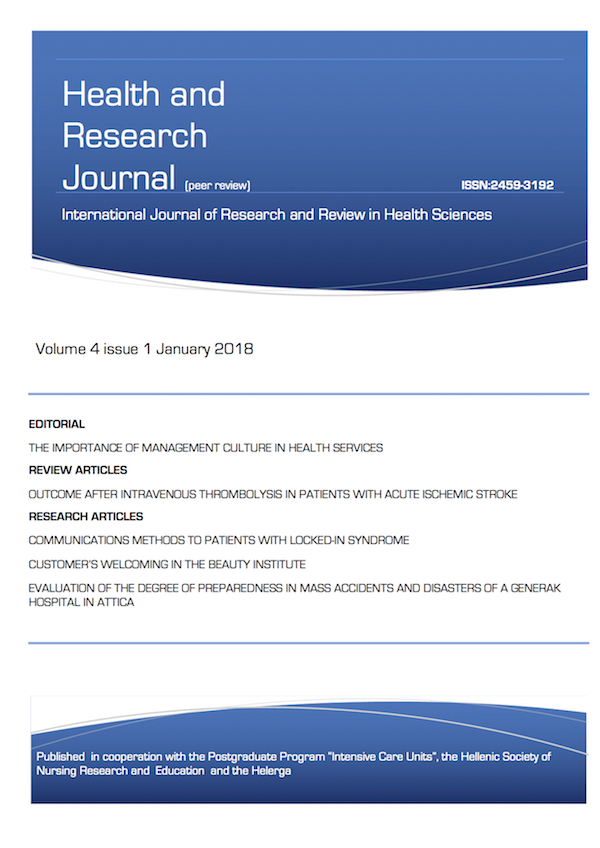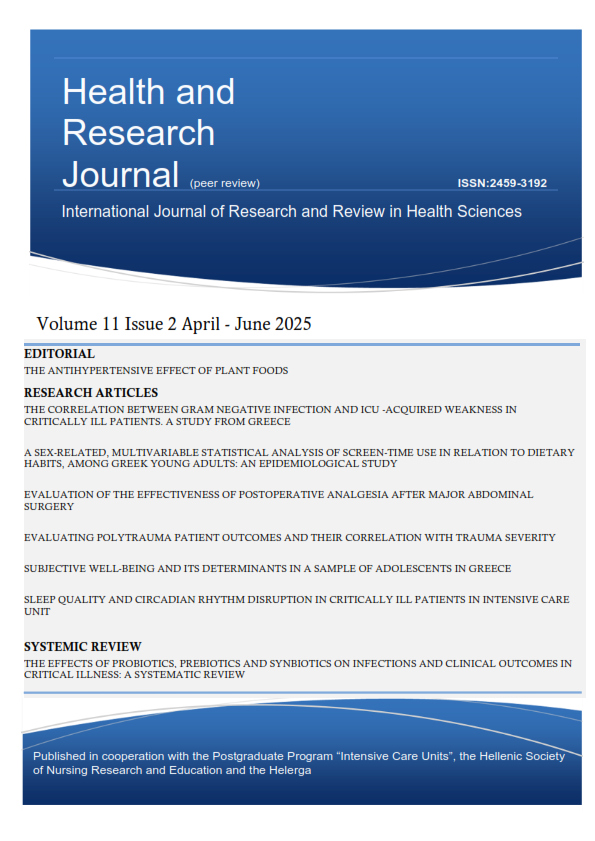Pleural effusion in patients undergoing coronary artery bypass graft and valve replacement: a population study
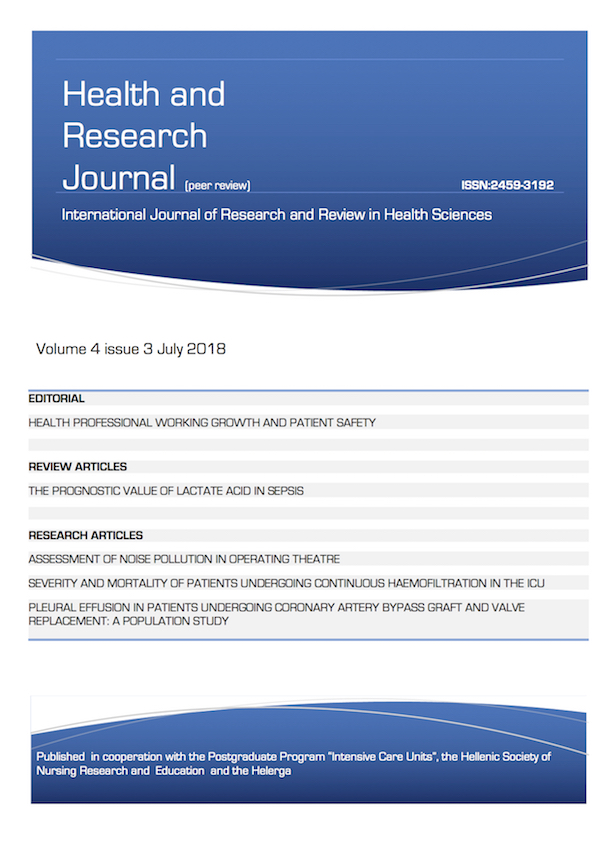
Abstract
Introduction: The postoperative pleural effusion (PE) is common in patients who undergo cardiac surgery. Most of these effusions develop as a consequence of the surgical procedure itself and follow a generally benign course. The characteristics of PE and the factors predisposing factors should be documented further.
Aim: The aim of this study was to determine the prevalence of PE after cardiac surgery. And also to determine whether this prevale is related to the type of cardiac surgery.
Material and Methods: This retrospective study was conducted at a large private hospital in Athens. The sample of the study was all adult patients who undergo coronary artery bypass graft (CABG), valve replacement or a combination of these surgeries. A special form was made to record patients’ demographic and clinical data. Descriptive statistics and correlation studies were performed with the SPSS 22.0, at significant level a=0.05.
Results: Among the 118 patients, who included in this study, 42.4% underwent CABG surgery, 29.7% valve surgery, and 28% a combination of two types of surgery. Postoperative pleural effusion was developed in 40% of those who underwent CABG, 42.9% of those who underwent cardiac valve surgery, and 42.4% of those who underwent in both types of surgeries. The mean time development of PE was 6.65 days for the CABG group, 4.8 days for the valve group and 8.7 days for the CABG +valve group. There was no statistically significant difference in the demographic and clinical data of patients with pleural effusion according the type of cardiac surgery.
Conclusions: Postoperative PE is a common complication at cardiac surgery and is more common in patients undergoing surgical recuperation of valve.
Article Details
- How to Cite
-
Rossolatou, M., Papageorgiou, D., Toylia, G., & Vasilopoulos, G. (2018). Pleural effusion in patients undergoing coronary artery bypass graft and valve replacement: a population study. Health & Research Journal, 4(3), 167–182. https://doi.org/10.12681/healthresj.19293
- Section
- Original Articles
Copyright notice:
The journal "Health and Research Journal" reserves the rights for copyright of the content of the website and also the copyright of the articles published.
By virtue of their appearance in this journal, the articles are free to be used for non-commercial purposes. However, the articles cannot and must not be used in anyway, published elsewhere or modified without any reference to the author and the first publication of the article.



